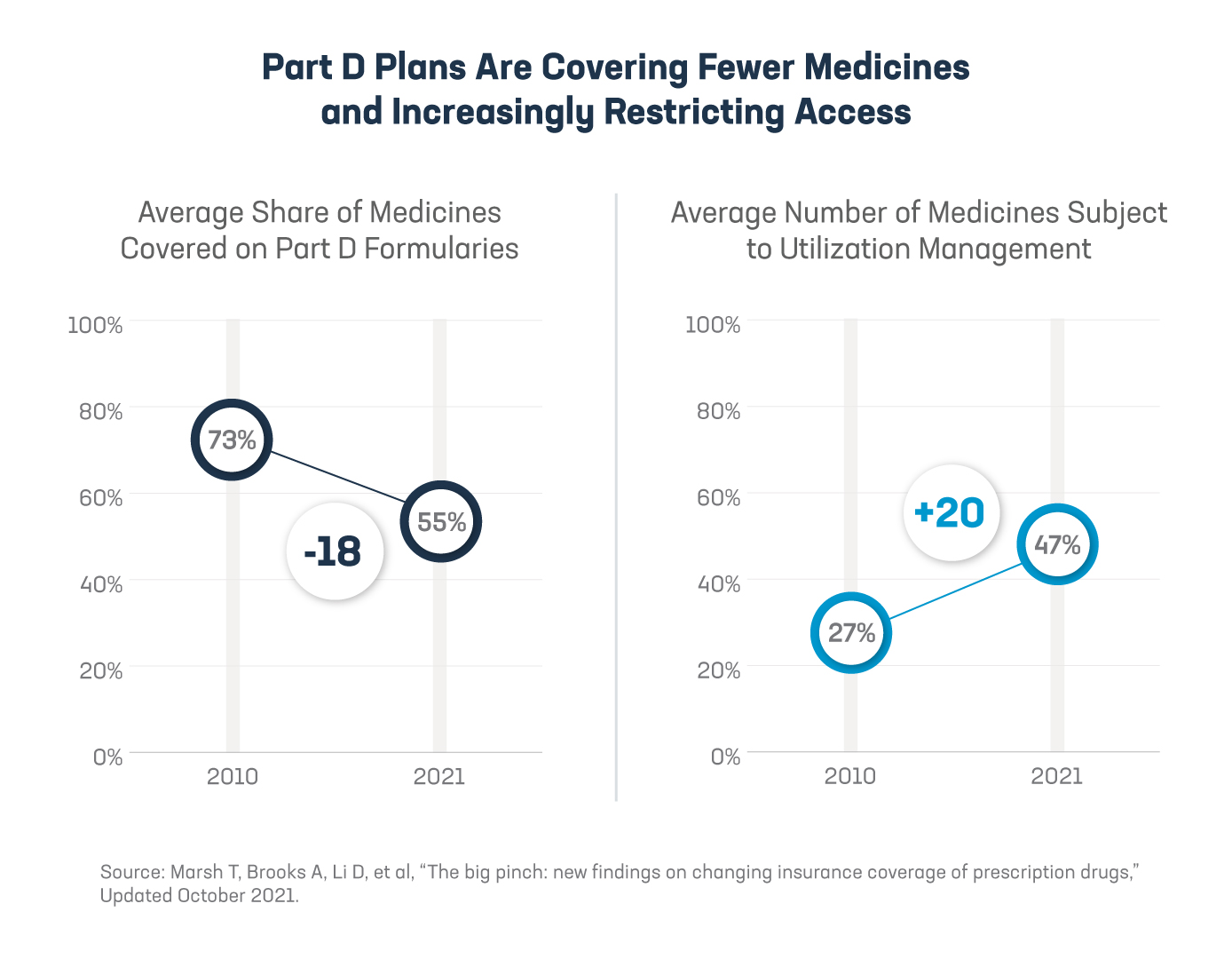In yesterday’s post, we learned how Medicare Part D works for seniors and people with disabilities. Unfortunately, Part D beneficiaries are increasingly facing higher out-of-pocket costs for the medicines they need. This includes high coinsurance amounts typically based on list price, a lack of an out-of-pocket cap and an uneven distribution of out-of-pocket costs over the course of the year.
Here are three facts about the Medicare Part D program you may not know:
1. Part D plans are covering fewer medicines and increasingly restricting access. Over the years, Part D plans have restricted access to medicines through tighter formularies, limiting the number of medicines covered for beneficiaries. Additionally, insurers and pharmacy benefit managers (PBMs) use what’s known as utilization management as a strategy to reduce their spending on covered medicines, which has a negative impact on patient access. These insurance tactics often prevent or delay patients from accessing the medicines that their physician prescribes and that they need. They include prior authorization, meaning a patient has to get approval from their health plan before they can access the medicine their doctor prescribed, and fail first (also known as step therapy), meaning a patient has to try and fail on a health plan’s preferred medicine before they can get the medicine their doctor prescribed.

2. Unfortunately, people enrolled in Part D typically do not benefit directly from the rebates and discounts health plans and PBMs negotiate with manufacturers. Most health plans do not share rebates with patients at the pharmacy counter. Instead, some patients pay cost sharing based on the medicine’s full list price, sometimes exceeding the net price paid by the Part D plan for the medicine. For instance, in 2017, non-low-income subsidy Part D patients using insulin paid 149% of the net plan costs in the deductible phase. Assuming rebates continue to grow, patients are expected to pay more than double net plan costs by 2026.

3. Part D plans have shifted costs to seniors through increased use of coinsurance. A new study, which looked at spending trends among non-low-income subsidy Part D beneficiaries from 2015 to 2019 across all brand medicines and several therapeutic areas, found coinsurance based on list price accounts for 80% of Medicare Part D beneficiaries’ out-of-pocket spending on brand medicines. And as plans increasingly use coinsurance, beneficiaries’ must pay a larger share of their total annual out-of-pocket costs at the start of each year, which creates serious affordability challenges. High cost sharing also exacerbates patient’s abandonment of their prescriptions. A new found 61% of patients did not fill their new prescriptions when they had to pay more than $250 out of pocket, while only about 7% of patients abandoned their prescriptions when out-of-pocket costs were less than $10.

PhRMA supports ways to modernize how Medicare covers and pays for medicines. Medicare Part D could work better and be made fairer by improving affordability and predictability for beneficiaries who face high out-of-pocket costs for their medicines. Improvements to Part D must be done the right way, with targeted and measured reforms. This can include capping Medicare beneficiary out-of-pocket costs in Part D, lowering cost sharing and spreading those costs over the calendar year, and making sure the savings negotiated with health plans are passed directly to patients.
Learn more about the Medicare Part D program.






